I had to laugh this week when I got a spam email with the title, “Loose 8 Ponds Quickly!” Wow, did this spammer need a copy editor.
A copy editor finds all the pesky little errors of grammar and spelling. Many publishers use the Chicago Manual of Style as their style guide. Because here’s a secret they don’t teach in high school: grammar and to an extent spelling, is a matter of convention. Grammar is an agreed-upon set of rules for how we punctuation, conjugate and parse our language. There are different style guides and each has slightly different rules. And the language is evolving.
For example, I heard recently that quotation marks as a way to indicate speech are being disregarded in some new publications. That doesn’t make sense to me! I’m conventional. But for an edgy YA novel, maybe it would draw in a few new readers, which is language in the service of the story.
Do you need to study the Chicago Manual of Style? It wouldn’t hurt; but it’s unlikely that most writers need to do that intensive study. You do need a solid grounding of grammar, though. Unless your character is uneducated, speaks in a dialect, or is sick, s/he should speak in standard English. If you can’t manage that, then you should take a class somewhere.
I recently read a story that started, “Because him and his whole family were going out to do some camping.”
Wow. Embarrassing. Here’s how to keep from being embarrassed.
Spell Check. I’ve been lax lately about running a spell check on everything that goes out. But I was recently embarrassed by an obvious spelling error and it jerked me back to reality. Everyone can make mistakes, so you should use the tools available to write as cleanly as possible. Use your word processor’s spell check! Then run over it again to catch things like he/eh, for/four/fore, their/there, etc.
Grammar Check. Likewise, run your word processor’s grammar check. Always.
Study E.B. White’s Elements of Style. If you constantly find yourself mixing up things like for/four/fore or loose/lose, then you need to brush up on your skills. White’s book has a long list of easily confused words and is a handy reference. Or try the variations on this classic, Elements of Style: Illustrated, or The Elements of Style: Updated for Present-Day Use.
Use the online Chicago Manual of Style. Not sure what word usage is correct or how to punctuate something? Use the online Chicago Manual of Style to answer all questions.
Want to go farther and test the limits? OK. Once you know the standards, feel free to play. Here are some helpful books.
What are your favorite grammar and style books?
And what standard grammar rules are being challenged by contemporary publishing?

Revisions are a circle. I print out a manuscript and read it while marking up edits and revisions. I go back to the computer and make corrections and changes. Then Print, Re-Read, Repeat.
The number of iterations depends on where I started and where I want to go, but the process remains the same. I am trying to match up what is in my head and what is on paper. If someone else reads it, I am trying to match up what is in my head, through the medium of words on paper, and put that exact image/story/whatever in someone else’s head–exactly. I try not to leave anything JUST in my head. It’s got to be on paper and in the reader’s head.
Revision–it’s a head thing. I’m doing it today. Are you?

U2 played Friday to more than 70,000 fans in Tampa, and I was one of them! You would not believe how close our seats were! I'll post photos later.
By the way, U2 fans, there are more than ten U2 references woven into the previous post--did you find them all?
Copy edits: French toast, French fries, but plaster of paris. Who knew?
ROAD TO TATER HILL by Edith Hemingway
Introduced first in 2007, debut children’s authors have formed a cooperative effort to market their books. Last year, I featured many of the Class of 2k8 on Revision Notes, as they told the stories of how 2k8 Novels Were Revised.
Today, I’m glad to begin the 2k9 Series of novel revision stories.
Class of 2k9
“When your editor says your character isn’t stepping up to the plate…” by Edith M. Hemingway, author of ROAD TO TATER HILL (Delacorte Press, September 8, 2009)
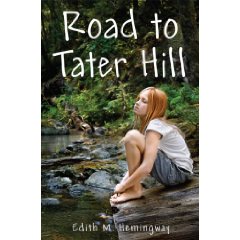
Structural Changes?
I consider the process of revision to be the true meat of writing. In fact, I revised my middle grade novel, ROAD TO TATER HILL, for three years before I decided it was finished and polished enough to submit to an editor. So, when I heard from Michelle Poploff, VP and Executive Editor of Delacorte Press, that she was interested in talking to me about my manuscript, I was confident that if she wanted it, there would of course be changes, but surely not major structural revisions.
She was interested and wanted to set up a telephone conversation a week later. I asked if there was something I should be thinking about in terms of revision before we talked. She said, “My assistant and I think your character, Drew, isn’t stepping up to the plate. We’d like you to consider removing him entirely from the story.”
I was thankful this was communicated through email and not face to face or over the telephone because there would have been a groan, a gasp, or a fleeting look of panic. My immediate reaction was, “How on earth could I take my brother out of my book?”
What I neglected to say earlier is that the seed for ROAD TO TATER HILL was my own childhood experience of the premature birth and death of my baby sister. Since I started writing it as a memory of an emotional childhood incident for a creative writing assignment, of course I included my older brother in the story. He was a significant part of the whole experience within our family. As the story evolved into fiction and took on more characters and an actual plot and story arc, the brother in the story tagged along, too. We had always been close, and I could not imagine life without him for either my character, Annie Winters, or me. However, the student in me that constantly strives to improve my writing urged me to be open to all suggestions—especially those from an experienced editor.
Yes, to Editor’s Suggestions
By the time our telephone conversation rolled around, I had come to terms with the change and realized the loss of a longed-for baby sister would be all the more poignant if Annie were an only child. I had even taken the necessary steps to mark every point in the story where Drew had appeared physically, through dialogue with other characters, or by reference in Annie’s thoughts and memory—especially those scenes where he played a significant role in driving plot points. Drew had appeared in 81 pages out of the then 154 total. I had also figured out the perfect character to beef up and take over the plot points that Drew could no longer control—Bobby Miller, the neighbor boy, who not only now became Annie’s best friend, but also added an interesting boy/girl dimension to the story.
Michelle and I talked for nearly two hours—going over those ideas in addition to many other lesser points and clarifications she needed. She ended the conversation by saying she would mail back my manuscript with all her written comments and suggested I think it over for a couple of weeks to decide if I wanted to move forward with these revisions. I did not tell her then that I had already decided—of course I would make those changes and even take them a step further!
Taking Time to Plan Revision
Once I received the manuscript, I spent several days reading through and taking meticulous notes. Then I put together a 4-page revision strategy list which included 9 detailed character improvements, 17 other considerations based on Michelle’s questions, a clarification of the time span of the entire story, and a plan for resequencing some of the major scenes.
Before scheduling our next telephone conversation, I emailed this detailed revision plan to Michelle, so she had time to look it over first. When we talked, her first words were, “You’ve really stepped up to the plate.” I had demonstrated that I was ready, willing, and able to make the revisions they wanted, and they were ready to offer me a contract, even before I completed the revisions.
Yes, there were more revisions required after I finished the first round and even before we reached the copy-editing stage. I even rewrote the entire novel in the first person point of view in order to dig deeper into the emotional core. It sounds as if I made every single change my editor suggested, but no, I didn’t. There were a few ideas that just didn’t ring true to my characters, even though I tried. In those cases, I came up with alternative plans that worked as well or better. I also learned that revisions often need to be done in layers, rather than all at once. One change perhaps leads to another change, which in turn reveals another problem that must be fixed, and so on. The hardest thing for me is to know when to finally stop revising.
I firmly believe, however, that my willingness to trust my editor, listen to her suggestions, and follow through with revisions was critical in landing my first “solo” contract!
Edith M. Hemingway
[email protected]
Road to Tater Hill
Delacorte Press, Sept. 8, 2009
http://www.classof2k9.com
Related posts:
- Cheryl Renee Herbsman: 2k9
- Rosanne Parry: 2k9

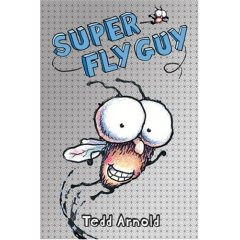
Thank you all for helping me compile a list of excellent early readers. I've put together a pdf list, printed it out, and highlighted the ones I plan on buying for summer work.
Just click here to read or print the Early Reader list.**
===================================
** It make take a few minutes to open. Let me know if you have any problems or if you'd rather receive it by e-mail.
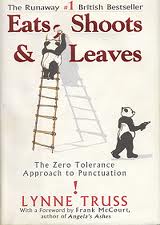 Eats, Shoots, and Leaves: The Zero Tolerance Approach to Punctuation
Eats, Shoots, and Leaves: The Zero Tolerance Approach to Punctuation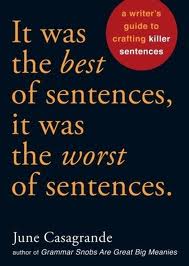 It Was the Best of Sentences, It Was the Worst of Sentences
It Was the Best of Sentences, It Was the Worst of Sentences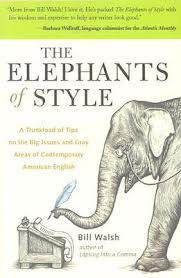 The Elephants of Style: A Trunkload of Tips on the Big Issues and Gray Areas of Contemporary American English
The Elephants of Style: A Trunkload of Tips on the Big Issues and Gray Areas of Contemporary American English
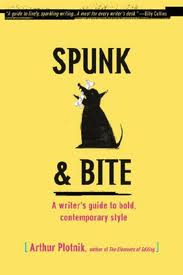 Spunk and Bite
Spunk and Bite







I know virtually nothing about U2, although they did one of my favorite hard rock songs of all time, "Bullet the blue Sky."
I saw U2 on their Joshua Tree tour. I was sitting waaaaay back in a very large dome, but was still an amazing concert. I can't wait to see your pictures!